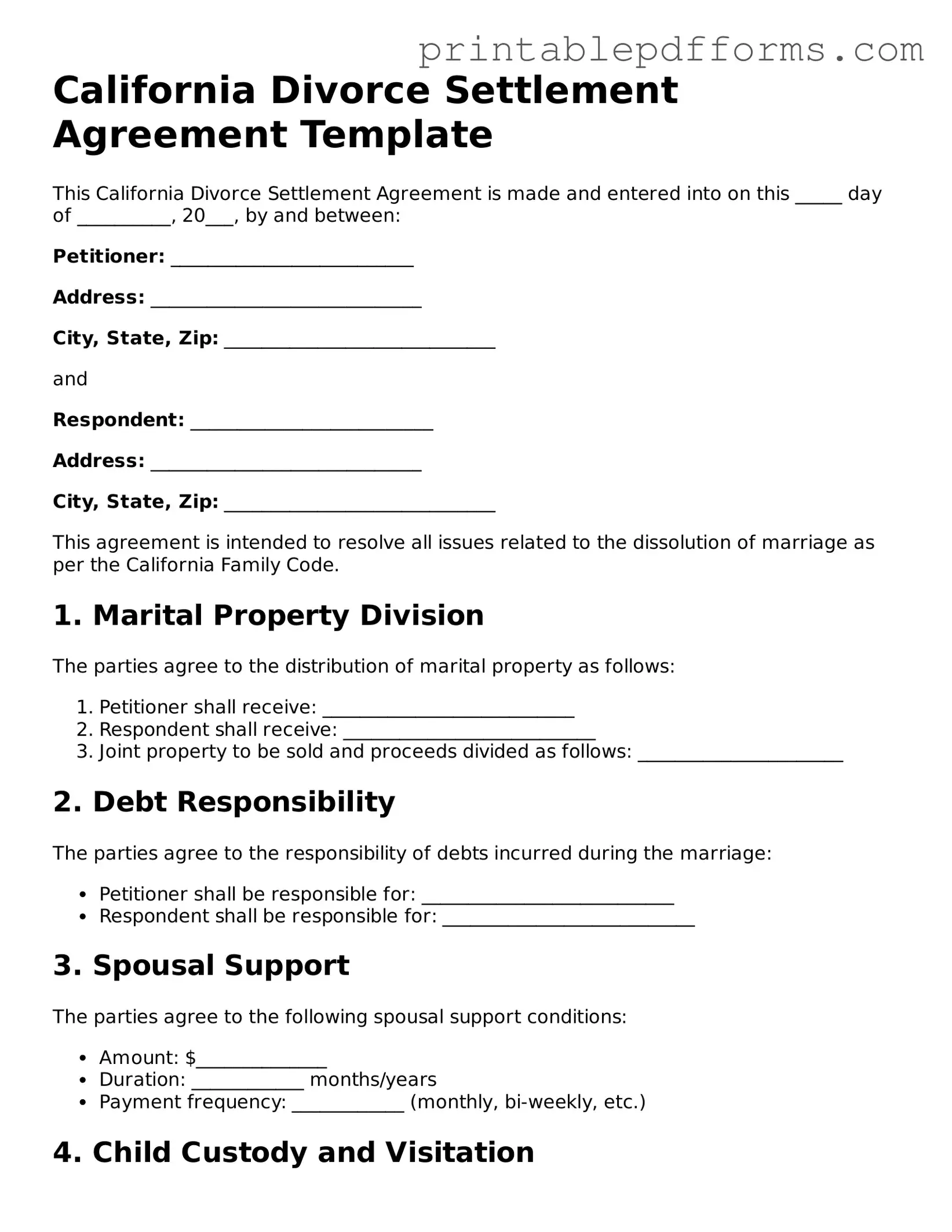California Divorce Settlement Agreement Template
This California Divorce Settlement Agreement is made and entered into on this _____ day of __________, 20___, by and between:
Petitioner: __________________________
Address: _____________________________
City, State, Zip: _____________________________
and
Respondent: __________________________
Address: _____________________________
City, State, Zip: _____________________________
This agreement is intended to resolve all issues related to the dissolution of marriage as per the California Family Code.
1. Marital Property Division
The parties agree to the distribution of marital property as follows:
- Petitioner shall receive: ___________________________
- Respondent shall receive: ___________________________
- Joint property to be sold and proceeds divided as follows: ______________________
2. Debt Responsibility
The parties agree to the responsibility of debts incurred during the marriage:
- Petitioner shall be responsible for: ___________________________
- Respondent shall be responsible for: ___________________________
3. Spousal Support
The parties agree to the following spousal support conditions:
- Amount: $______________
- Duration: ____________ months/years
- Payment frequency: ____________ (monthly, bi-weekly, etc.)
4. Child Custody and Visitation
The parties agree on the following arrangements regarding children:
- Children's names and ages: ___________________________
- Custody arrangement: ___________________________
- Visitation schedule: ___________________________
5. Child Support
Child support obligations will be determined as follows:
- Amount: $______________ per month
- Duration: Until the children reach the age of majority or as stipulated by law
6. Miscellaneous Provisions
This section will cover any additional agreements:
- ____________________________
- ____________________________
By signing below, both parties agree to the terms stipulated in this agreement.
______________________________
Petitioner Signature Date: ____________
______________________________
Respondent Signature Date: ____________
This Divorce Settlement Agreement will be executed according to the laws of the State of California.
